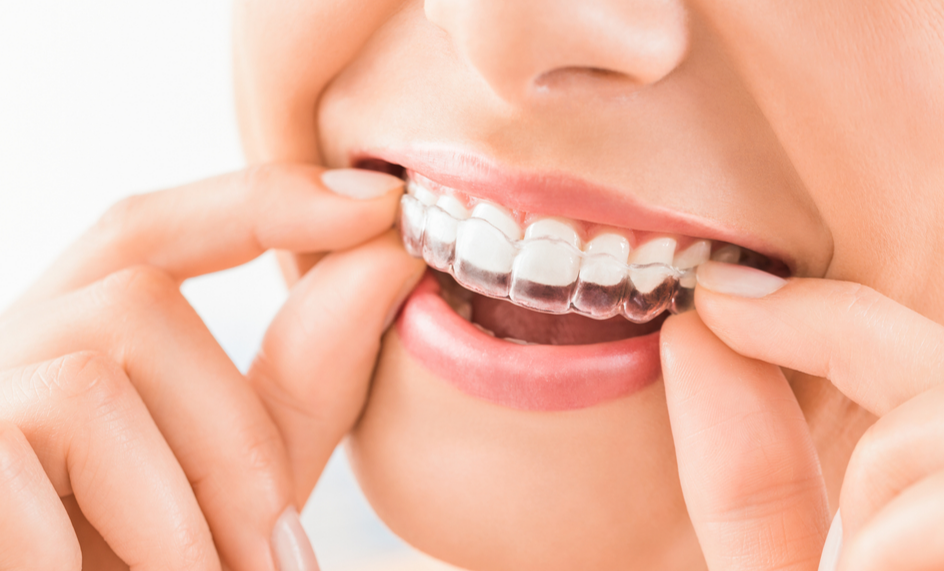A common question for individuals who use dental appliances is, “Can you eat with a dental appliance in?” The answer depends on the type of appliance you are using. While some dental appliances are designed to be worn while eating, others should be removed to prevent damage or discomfort. In this article, we’ll explore which Dental Appliances can be worn while eating and when it’s best to remove them for optimal care and function.
Types of Dental Appliances and Eating Guidelines:
Different types of dental appliances come with specific guidelines for wearing them while eating. Understanding these guidelines can help prevent damage to the appliance and protect your oral health.
- Nightguards: Nightguards are typically worn during sleep to protect against teeth grinding. They should not be worn while eating, as food particles can become trapped, leading to discomfort or poor fit
- Clear aligners: Aligners, such as Invisalign, are removed during meals to avoid food buildup and ensure the aligners stay clean. Eating with aligners can also cause staining and damage
- Braces: Braces can be worn during meals but require caution. Sticky or hard foods should be avoided to prevent damage to brackets and wires. Chewing tough foods can cause discomfort or break parts of the braces
- Retainers: Similar to aligners, retainers should be removed while eating to avoid food buildup and to ensure they maintain their shape and effectiveness
- Sleep apnea appliances: These appliances, which help maintain an open airway, are typically worn at night. They should be removed while eating to prevent food from affecting the device’s functionality
Knowing when to remove your appliance is key to preserving its function and longevity.
Why You Should Remove Some Dental Appliances While Eating?
There are several reasons why certain dental appliances should be removed while eating. Understanding these reasons can help protect both your appliance and your oral health.
- Preventing food buildup: When appliances are worn during meals, food particles can get trapped, making it difficult to clean them afterward
- Avoiding damage: Eating with a dental appliance in your mouth can cause stress on the device, leading to cracks, breaks, or wear over time
- Maintaining comfort: Some dental appliances can cause discomfort or irritation if exposed to food, which could affect your eating experience and cause soreness
- Preserving hygiene: Keeping your dental appliance clean is essential for oral health. Eating with an appliance can lead to bacteria buildup and increase the risk of oral infections
Taking the time to remove your dental appliance during meals helps maintain its function and hygiene.
Foods to Avoid When Wearing Dental Appliances:
Whether or not you wear your appliance during meals, there are certain foods that can cause problems when you do. Here are some foods to avoid to protect your dental appliance:
- Sticky foods: Foods like caramel, taffy, and gum can stick to your appliance, leading to buildup that’s hard to clean
- Hard foods: Hard candies, nuts, and raw vegetables can damage or break parts of your appliance, such as brackets or wires in braces
- Crunchy foods: Popcorn, chips, and crackers can create pressure on your dental appliance and cause discomfort or breakage
- Sugary foods and drinks: Sugary foods can promote plaque buildup, which can cause tooth decay and affect the appliance’s longevity
By avoiding these foods, you can help preserve your appliance and prevent unnecessary damage.
Best Practices for Eating With a Dental Appliance:
If you choose to eat with your dental appliance in place, there are some best practices to ensure your appliance stays in good condition.
- Chew carefully: Avoid biting down too hard on food, especially on harder or tougher items, to minimize pressure on your appliance
- Opt for softer foods: Soft foods like pasta, yogurt, and cooked vegetables are less likely to cause damage to your appliance
- Cut food into small pieces: Cutting your food into smaller, manageable pieces can help reduce the pressure on your dental appliance
- Rinse your mouth: After eating, rinse your mouth and clean your appliance to remove any food particles that may have gotten trapped
These practices can help maintain the integrity of your dental appliance while allowing you to enjoy meals more comfortably.
What to Do After Eating With a Dental Appliance In?
If you happen to eat with your Dental Appliances treatment in, it’s important to properly care for it afterward to avoid complications.
- Clean your appliance: Remove your appliance immediately after eating and clean it thoroughly using the recommended cleaning solution or mild soap and water
- Brush your teeth: It’s important to brush your teeth after eating, especially if you’ve worn your appliance during meals, to remove food particles and prevent plaque buildup
- Check for damage: Inspect your appliance for any signs of wear or damage. If you notice any issues, contact your dentist for advice or a replacement
- Store properly: If you’re not wearing your appliance, store it in a clean, dry case to avoid contamination or damage
By properly cleaning and inspecting your appliance, you can prevent damage and ensure it continues to work as intended.
In conclusion, whether or not you can eat with a dental appliance in depends on the type of appliance you have. Most appliances, such as nightguards, clear aligners, and retainers, should be removed during meals to maintain cleanliness, prevent damage, and ensure comfort. If you do wear your appliance during meals, be mindful of the foods you eat and take extra care to clean your appliance afterward. Regular check-ups with your dentist will help ensure your appliance remains in good condition and continues to function as intended.

